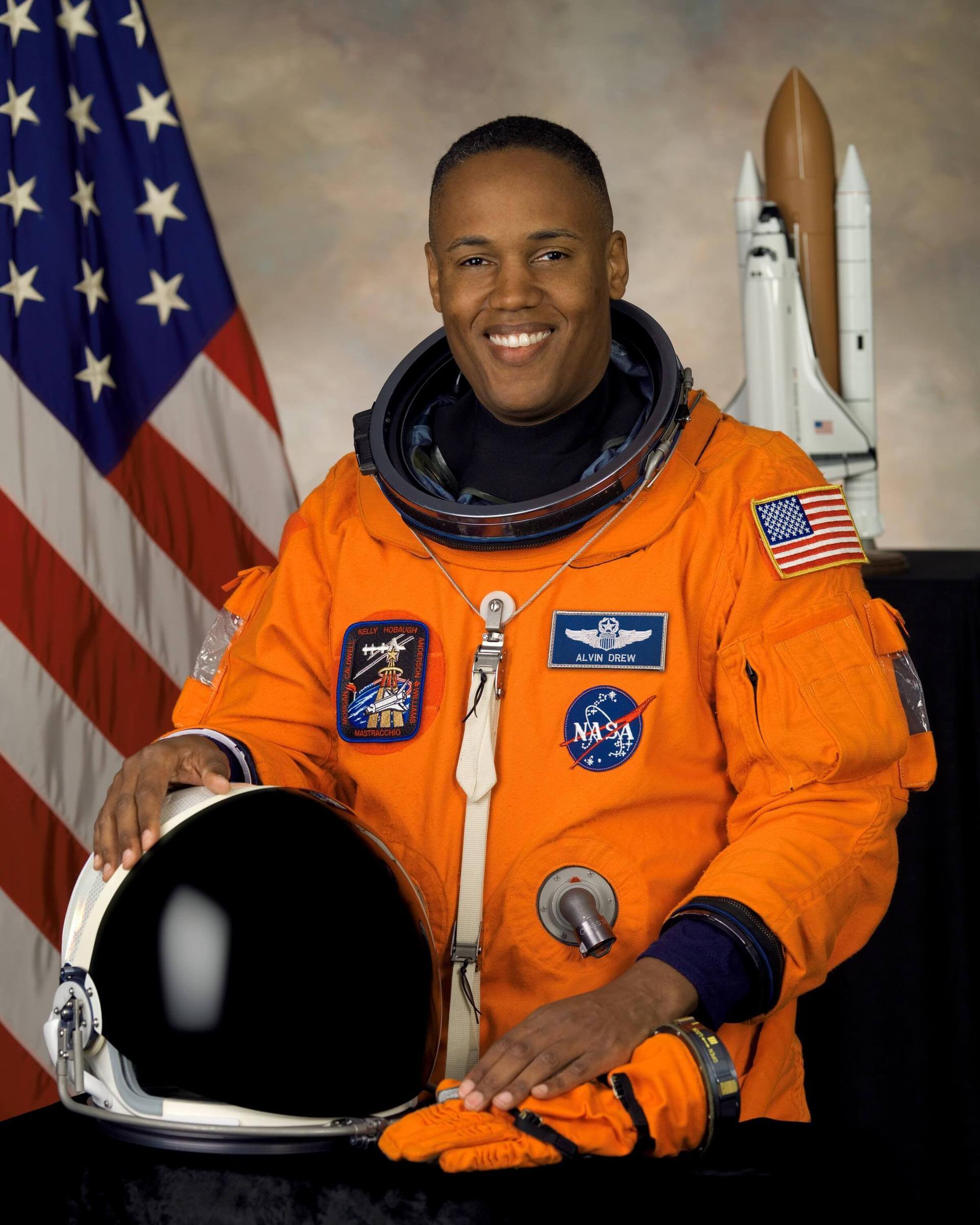Alvin Drew
American - (NASA)
Retired
Date of Birth: Nov. 5, 1962
Age: 63
Colonel Benjamin Alvin Drew is a United States Air Force officer and a NASA astronaut. He has been on two spaceflights; the first was the Space Shuttle mission STS-118 to the International Space Station, in August 2007. Drew's second spaceflight took place in March 2011 on STS-133, another mission to the International Space Station. STS-133 was Space Shuttle Discovery's final mission. Drew took part in two spacewalks while docked to the station. Drew was the final African-American to fly on board a Space Shuttle, as the final two Space Shuttle missions, STS-134 and STS-135, had no African-American crew members. He also is currently the latest African-American Astronaut to fly in space. Drew was selected to be an astronaut in NASA's Astronaut Group 18 in July 2000. Following his rookie spaceflight, Drew spent almost a year at the Yuri Gagarin Cosmonauts Training Center in Star City, Russia, overseeing NASA's training operations there as Director of Operations. On February 28, 2011, Drew became the 200th person to walk in space, when he conducted the first spacewalk of the STS-133 mission with fellow astronaut Steve Bowen.
Space Shuttle Endeavour / OV-105 | STS-118
National Aeronautics and Space Administration | United States of AmericaKennedy Space Center, FL, USA
Aug. 8, 2007, 10:36 p.m.
Space Shuttle Discovery / OV-103 | STS-133
National Aeronautics and Space Administration | United States of AmericaKennedy Space Center, FL, USA
Feb. 24, 2011, 9:53 p.m.
Status: Success
Mission:
STS-133 was an ISS assembly flight. Payload included the Permanent Multipurpose Module Leonardo, which was left permanently docked to one of the station's ports. The shuttle also carried the third of four ExPRESS Logistics Carriers to the ISS, as well as a humanoid robot called Robonaut.
Low Earth OrbitThe National Aeronautics and Space Administration is an independent agency of the executive branch of the United States federal government responsible for the civilian space program, as well as aeronautics and aerospace research. NASA have many launch facilities but most are inactive. The most commonly used pad will be LC-39B at Kennedy Space Center in Florida.
Long March 3B/E
Fengyun-4C
Launch Complex 2 (LC-2) - Xichang Satellite Launch Center, People's Republic of ChinaChina's geostationary meteorological satellite program FY-4 (Feng Yun 4) is the second generation of chinese geostationary meteorological satellites.
Long March 8A
SatNet LEO Group 17
Commercial LC-1 - Wenchang Space Launch Site, People's Republic of ChinaA batch of 9 Low Earth Orbit communication satellites for the Chinese state owned SatNet constellation operated by the China Satellite Network Group.…
Soyuz 2.1a
Obzor-R No.1
43/4 (43R) - Plesetsk Cosmodrome, Russian FederationNote: Assignment of payloads to this launch is uncertain. The Russian Obzor-R satellite is a planned X-band radar earth observation satellite desi…
LVM-3 (GSLV Mk III)
BlueBird Block 2 #1
Satish Dhawan Space Centre Second Launch Pad - Satish Dhawan Space Centre, IndiaAST SpaceMobile’s Block 2 BlueBird satellites are designed to deliver up to 10 times the bandwidth capacity of the BlueBird Block 1 satellites, requi…
Long March 12A
Demo Flight
Long March 12A Pad - Jiuquan Satellite Launch Center, People's Republic of ChinaFirst test launch of CASC/SAST’s Long March 12A rocket, with a dummy payload. The rocket’s 1st stage attempted to land on a landing pad about 300 km …



